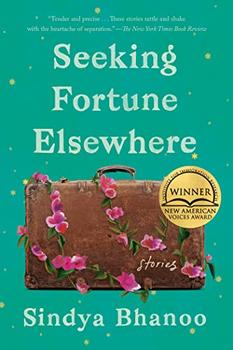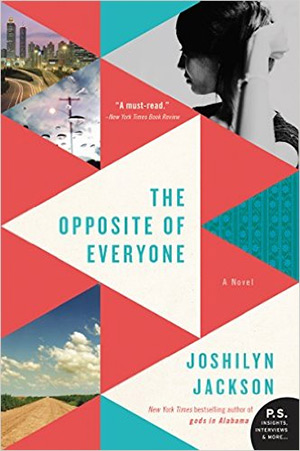Summary | Excerpt | Reviews | Beyond the book | Read-Alikes | Genres & Themes | Author Bio

In the 70s when author Akhil Sharma was just eight, his family emigrated to the United States. For a while it looked like the American dream was well within reach, but then tragedy struck: a diving accident in a swimming pool left Sharma's older brother permanently brain-damaged. This real-life incident forms the central thread of Sharma's elegiac new novel, Family Life. It movingly explores how an immense tragedy's after-effects – right from the searing immediate pain to the dull lingering long-term ache – can change and sculpt family dynamics.
Narrated by the fictional Ajay Mishra, the younger of the two sons in the nuclear family, Family Life opens in the India of the 70s, specifically in New Delhi. Dazzled by the scientific prowess of the West, the elder Mishra decides that the family needs to emigrate to America – mainly to give his boys every opportunity at academic enrichment. The rest of the family joins the patriarch in short order and slowly they get used to the many bounties the United States promises. The immediate goal is for Birju, the older son, to qualify for admission to the Bronx High School of Science in New York City. Even before this milestone can be thoroughly enjoyed however, the family's happiness is cut short and an accident renders this brilliant boy brain-dead.
What happens when the axis around which your life revolves is violently sheared? The sudden shift in the center of gravity leaves the Mishras scrambling. Barely understanding the workings of their adopted country, they nevertheless have to deal with the aftermath of the tragedy: hospitals, bills, long-term care. Deprived of an extended family's support, flailing around without a radar in a strange land, the three remaining Mishras each relies on a crutch to get through trying times. The father slowly takes to drink while the boys' mother finds some succour in faith. A variety of purported healers show up at the door keeping a thin sliver of hope alive.
As for Ajay, he finds a way out of the claustrophobia through books and the power of the written word. The choice of the first-person narrative is just right for the story, which above all, can be read as a special twist on the coming-of-age narrative. In fact, Sharma's light-handed touch belies the expert way in which he slowly moves the focus away from the accident and the older brother to young Ajay. As the tragedy is now viewed through the rearview mirror, it's all about the child and his self-centered preoccupation with young adulthood. Plagued as he is by survivor's guilt, even Ajay's coming-of-age doesn't happen outside of the large shadows cast by the accident. There are telling scenes (one in which Ajay breaks down when he doesn't get a Christmas present, for example) where the boy regrets forcing the moment to be about him. Sharma brilliantly plays up this dichotomy – the child's understandable desire to indulge his wants on the one hand, contrasted against the guilt at even indulging such a "fantasy," on the other. There's nothing "normal" about this young man's growing-up process and his slow coming to terms with the finality of the smothering tragedy.
It is also interesting to watch the demographics of suburban New Jersey change as the story progresses over a decade. Familiar with (if not always cocooned by) a small circle of closely knit Indians, the older Ajay at the end of the book can hardly recognize the new Indian immigrants who arrive every day in his small town of Iselin: "Different people immigrated now. Now one saw Indians who worked outdoors. There was a white-haired man who worked as a gas station attendant near my parents' house. Whenever I pulled in to his station and asked him how he was doing, he would start speaking quickly, eagerly about how much he hated America and every white person. I had the sense that if I told him that things were not so bad, he would hate me, too, and would think I only looked Indian but was as ignorant as a white." Sharma manages to subtly play up the different shades on the immigration spectrum where it's not just race that pits brown vs. white, it's also class that demarcates brown vs. other brown. By doing so, he brilliantly paints Ajay's alienation not just within his home but outside of it as well. It is important to stress though that readers looking for a story dealing primarily with immigrant angst won't find it here in Family Life. The Mishras might be new immigrants but that arc is not the plot's primary driver.
If the novel is based on Akhil Sharma's personal tragedy, the natural impulse is to wonder why he didn't choose to write a memoir. He has said that the novel is seventy percent autobiographical and has cautioned against dwelling too much on trying to figure out which elements ring "true" and which ones don't. The focus, Sharma points out, should be on whether the narrative has power. And that it certainly does. Sharma's reliance on fiction can perhaps be explained by the protagonist Ajay's love of Hemingway. "As I kept reading works by this famous man, who so valued suffering in silence, I began to see my family's pain as belonging in a story," the teenager says. The novel, it seems, is just the perfect vehicle for pain this searing.
It's worth mentioning that despite the grim nature of the story, this is not a depressing book. Sharma's talent lies in showing how much can be gained simply by a stoic faith and in keeping up the everyday plod. At one point a fellow Indian immigrant praises the Mishras for their sacrifice in taking care of Birju. "What choice do I have?" asks the mother. She's right. There's not much choice. Eventually this tragedy too folds into that larger thing that we call life. As Akhil Sharma's novel eloquently shows, the beauty of our daily existence is that the small joys might sometimes be hidden but they are always on offer. You just have to know where to look.
![]() This review was originally published in The BookBrowse Review in April 2014, and has been updated for the
February 2015 edition.
Click here to go to this issue.
This review was originally published in The BookBrowse Review in April 2014, and has been updated for the
February 2015 edition.
Click here to go to this issue.

If you liked Family Life, try these:

by Sindya Bhanoo
Published 2023
These intimate stories of South Indian immigrants and the families they left behind center women's lives and ask how women both claim and surrender power - a stunning debut collection from an O. Henry Prize winner.

by Joshilyn Jackson
Published 2016
A fiercely independent divorce lawyer learns the power of family and connection when she receives a cryptic message from her estranged mother in this bittersweet, witty novel from the nationally bestselling author of Someone Else's Love Story and gods in Alabama - an emotionally resonant tale about the endurance of love and the power of stories to ...
We must believe in luck. For how else can we explain the success of those we don't like?
Click Here to find out who said this, as well as discovering other famous literary quotes!
Your guide toexceptional books
BookBrowse seeks out and recommends the best in contemporary fiction and nonfiction—books that not only engage and entertain but also deepen our understanding of ourselves and the world around us.